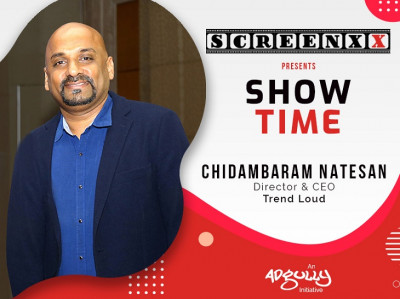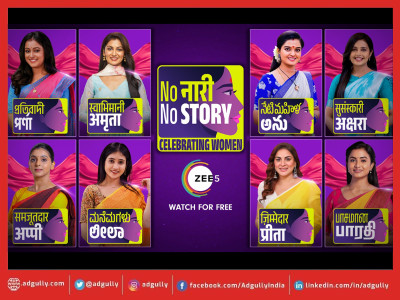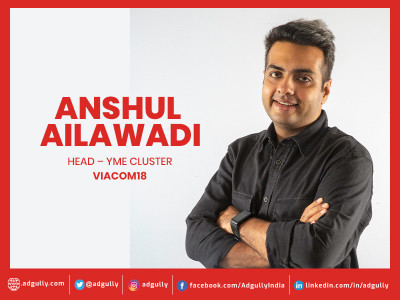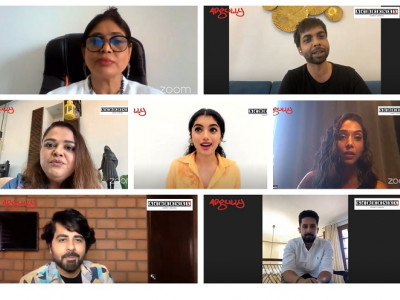There’s a shift in consumer preference for long-form content: Chidambaram Natesan
It’s SCREENXX time again, Adgully’s premiere property for the Video-On-Demand and Digital Entertainment space. In the run-up to SCREENXX 2020, we are lining up a series of interesting interactions and stories on the OTT space and highlighting how this sector is evolving and the consumers’ engagement with the OTT platforms, as part of our ‘Show Time’ series.
In conversation with Adgully, Chidambaram Natesan, Director and CEO, Trend Loud, gives insights on the content consumption trends during the pandemic times, how OTT players are growing their subscriber base, shift to long-form content and more.
Also read: Show Time: “TV is fictional; Cinema is larger than life; OTT is in the realism space”
What are the key digital trends that are bringing about a change in content consumption during COVID times?
There is a steep increase in content consumption, and the time spent by the average user is over 4 hours per day as compared to previous one and a half hours on Social Media platforms. This has made long-form content like movies and web series as the most preferred content for users vis-à-vis short-form content. Also, it has helped the OTT platforms to a larger extent to gain more subscribers. OTT platforms with early mover advantage have been able to cater to these specific needs of the users during this time and have gained the maximum benefit and better real estate in users’ Mobile App space, compared to the other OTTs who are still playing the wait and watch game. I believe that this wait is going to be even longer for them.
The number of uploads in the genre-specific category indicates a 120% spike in the ‘Education’ category post lockdown. While the ‘Music’ genre, which is majorly short-form content, has seen a 9% decline in consumption during the lockdown period, which also indicates the shift in the consumer preference towards long-form content. An increase in leisure time at a consumer’s disposal is cited as the reason for this shift. Certain genres that have seen a significant increase in viewership are Food & Recipes (52%), Gaming (23%), and Information (42%).
Despite the above scenarios, Trend Loud took a calculative risk combined with the research numbers, and launched many top celebrities’ content on digital platforms, which have been performing way beyond our expectations, especially Food & Recipes being at the top of the chart.
How do you see OTT platforms changing consumers’ expectations around the scope and scale of content?
The era for on-demand content started in early 2017 and was growing at its own pace. But the scenario completely changed during the pandemic and fueled the growth at a rapid pace. Now, consumers are increasingly accessing media outside the confines of their couches and within the comfort of their personalised 5+ inch screens. Moreover, that screen is no longer restricted to the elite as video is going mass at a rapid pace; and as the consumption grows with demand in long-form content (web series and Direct-to-Digital Movies), OTT consumers will demand seamless access to services, compelling stories and value for money. To deliver the same, platforms would require an intuitive understanding of what the consumers want, without the users having to ask for it.
As the OTT landscape gets hyper competitive, currently most of the OTT players are focusing on fictionalised content, however, soon the demand for non-fiction will also grow at a rapid speed.
Good times are ahead for consumers who will enjoy a bouquet of shows and content.
How would you map the opportunity vis-a-vis consumer interest in the OTT video streaming market in India?
Currently, the OTT market is catering to only fewer audiences, however, the scenario will definitely change in next few years and they will cater to a wider audience. For producers like us, who focus on quality and appealing content with lesser risk, OTT has already given us a good opportunity, and as a wider base demand for content will increase, it will help us to create more shows and formats.
Also, scope for regional content will increase multi-fold. Currently, we are producing shows in Tamil and Telugu languages; with market expansion we will get the opportunity to create shows in other South Indian languages as well.


















Share
Facebook
YouTube
Tweet
Twitter
LinkedIn